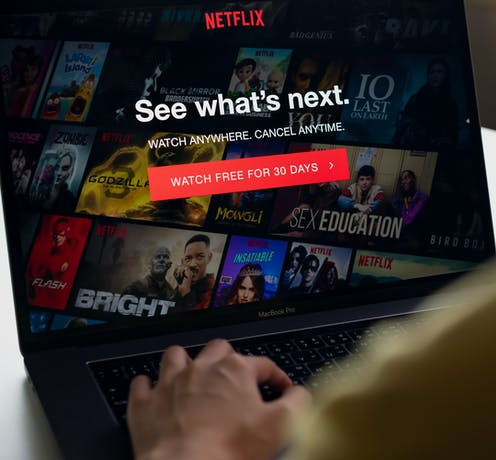The future for streaming services: Four ways your TV subscriptions could change because of the cost of living crisis
UK households are cancelling streaming service subscriptions, citing the need to cut comforts to afford increasingly expensive necessities.

UK households are cancelling streaming service subscriptions, citing the need to cut comforts to afford increasingly expensive necessities such as food and fuel.
Netflix, which has spent the last decade cementing itself as one the the UK's top streaming services, is often seen as a bellwether for the entertainment industry. And so its forecast for falling subscriptions numbers earlier this year already had the market spooked. Netflix went on to announce a second-quarter loss of nearly 1 million subscribers worldwide in July, beating predictions of a 2 million subscriber decline but still the biggest fall in the company's history.
It's important to put such figures into context, however. The conditions created by COVID were quite exceptional and worked very much in streaming platforms' favour – many of us were locked in our houses with not much else to do in our spare time but watch movies.
But the end of the COVID lockdown period has been closely followed by a rapid rise in the cost of living, creating a double whammy that streaming platforms fear could bring further falls in subscribers as users try to cut costs. Platforms are scrambling to limit the damage, with Amazon Prime the latest to announce a price hike to combat inflation. Aside from raising fees, other strategies will be used to address the current economic environment. Here are four ways your streaming subscription service could change as a result:
1. It will be cheaper, but less private
Netflix has announced it will launch a cheaper, ad-supported subscription tier in early 2023, similar to that offered by music streaming service Spotify. These kinds of models are not necessarily profitable, but can be used as a marketing tool to get users hooked on the service with the aim of converting them into paying customers in the future. In creating a cheaper (but not free) tier, providers can use commercials to subsidise part of their income and hopefully retain some customers that might have otherwise stopped their subscription.
This kind of model could have a few privacy implications, however. Providers like Netflix currently mostly use our personal consumption data to work out what to commission and create, as well as to suggest new content to us once it's made. However, the use of targeted advertising – showing ads based on usage – may entail sharing our data with third parties.
2. It will be smarter, but stricter
Similarly, we can expect continued use of artificial intelligence and machine learning by providers as they refine their understanding of our preferences for their own purposes. This information may also be used to help services fight account sharing. Providers can use IP addresses – the unique code that identifies a device – to track when individual users connect from different locations outside the same household.
Misuse of streaming services is estimated to be in the millions of users in Britain, while a Citi analyst has estimated that US streaming services lose around US$25 billion (£21 billion) in revenue annually to password sharing.
Netflix, which accounts for about a quarter of that figure, has recently started trialling an option in certain regions to pay extra for use outside of the main household. Otherwise, providers have generally shied away from acting on such breaches because of the potential for backlash by subscribers, focusing instead on more significant pirating activity. Get ready for this attitude to change in line with the financial outlook, particularly for those that post usernames and passwords on pirating websites.

3. It will be bigger, but bundled
With more than 200 million subscribers in 2021, Amazon Prime is one of the most successful on-demand streaming services at the moment. But it's the other services bundled with the streaming subscription, such as free Amazon package delivery, that often attract users first.
This kind of strategy is based on the idea of an integrated business model where you can't necessarily cancel an individual service – the on-demand streaming service can't be unbundled from the shipping service, for example. And as we reach a saturation point of multiple subscriptions, users are making cuts due to the rising cost of living.
Research shows that more people want one-stop shop subscriptions – for example, one payment that covers movies, sports and perhaps other items such as cloud storage. And for companies, having subscribers use more than one service provides more detailed insights into their preferences.
Spotify is a good example of a specialist provider that has been able to find success without this strategy because it offers access to pretty much all music available in digital form. But in the video streaming market, where there is no single platform with all shows and movies, companies may need to acquire more services to create an incentive for users to subscribe. Disney Plus has already launched this kind of strategy in the US by bundling some of its other content into one subscription. We should expect other streaming services to start following suit.
4. It'll be better quality, but more focused on its own content
When video-on-demand platforms first started, providers focused on gathering the broadest content catalogue. Now platforms are investing more in creating content. They want a few iconic series – think Stranger Things, The Crown or Game of Thrones. We saw this strategy come into play this year when the latest season of Stranger Things spared Netflix from a more severe drop in subscribers.
Lower quality, easy-consumption content will still be available, but can be bought from outside companies. Platforms will instead be able to use our data to identify series in which to make significant investments in acting, special effects, writing and costumes. This strategy has already proven successful for record-setting shows like The Crown, which had a budget of around $13 million per episode. HBO's budget for House of the Dragon is reportedly $20 million per episode, while each installment of the fourth season of Stranger Things cost Netflix around $30 million.
Streaming platforms are betting that this increased investment in programming and data analysis will be enough to help them to hang on to subscribers even as household bills continue to rise.
Paolo Aversa does not work for, consult, own shares in or receive funding from any company or organisation that would benefit from this article, and has disclosed no relevant affiliations beyond their academic appointment.






















